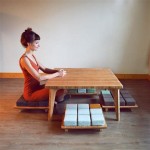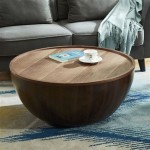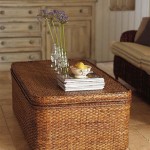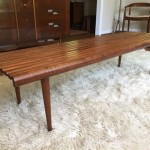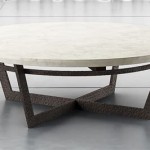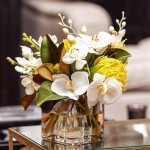How To Decorate a Side Table in Your Dining Room
The dining room is often considered the heart of the home, a space dedicated to meals, gatherings, and shared moments. While the dining table itself takes center stage, carefully placed and thoughtfully decorated side tables can significantly enhance the room's functionality and aesthetic appeal. A well-decorated side table provides extra surface space for serving dishes, displaying decorative items, and offering convenient storage. The following points will explore strategies for effectively decorating a side table in the dining room, encompassing considerations of style, functionality, and visual harmony.
The process begins with selecting a side table that complements the existing dining room furniture and décor. Factors such as size, shape, material, and style must be taken into account. A too-large side table can overwhelm the space, while a too-small one may lack utility. Similarly, the style of the side table should harmonize with the dining table, chairs, and other furnishings. A modern dining room might benefit from a sleek, minimalist side table, while a more traditional setting could accommodate a side table with ornate detailing.
Choosing the Right Side Table for Your Dining Room
Selecting the right side table is paramount to successfully decorating the dining room. The table should not only be aesthetically pleasing but also functional and appropriately sized for the space. Careful consideration of these elements will contribute to a cohesive and visually appealing dining room design.
One crucial aspect is the size of the side table. Determine the available space in the dining room and consider how the side table will impact the flow of traffic. If the dining room is small, a narrow side table or a corner unit might be the best option. In larger dining rooms, a more substantial side table can serve as a focal point. Measure the intended space meticulously to ensure the side table fits comfortably without obstructing movement or making the room feel cramped.
The height of the side table is another important factor to consider. Ideally, the side table should be at the same height as the dining table or slightly lower. This ensures that items placed on the side table are easily accessible during meals and that the visual balance of the room is maintained. If the primary purpose of the side table is to display decorative items, a taller table might be appropriate, but ensure it doesn't overshadow the dining table itself.
The style and material of the side table should complement the existing décor of the dining room. If the dining room features a modern aesthetic with clean lines and minimalist design, a side table made from materials like metal, glass, or polished wood would be suitable. For a more traditional dining room, a side table crafted from solid wood with intricate carvings or antique finishes might be a better choice. Consider the color palette of the room as well. The side table should either blend seamlessly with the existing color scheme or serve as a subtle accent piece. A contrasting color can add visual interest, but it should be chosen carefully to avoid clashing with the overall design.
Functionality is a key consideration when selecting a side table. Determine how the side table will be used. Will it primarily serve as a surface for serving dishes and drinks, or will it also provide storage space? If storage is a priority, look for side tables with drawers, shelves, or cabinets. These features can help keep the dining room organized and clutter-free. If the side table will mainly be used for serving, a simple design with a smooth surface is often the best choice. Consider the weight capacity of the side table as well, especially if it will be used to hold heavy items like serving platters or stacks of dishes.
Finally, take into account the overall layout of the dining room. Consider the placement of the dining table, chairs, and other furniture. The side table should be positioned in a way that is both convenient and visually appealing. Avoid placing the side table in a location that blocks doorways or obstructs walkways. Experiment with different placements to find the arrangement that best enhances the functionality and aesthetics of the dining room. Consider the proximity of electrical outlets if you plan to use lamps or other electrical appliances on the side table.
Creating a Balanced and Visually Appealing Arrangement
Once the ideal side table has been selected, the next step is to arrange items on the surface in a way that is both balanced and visually appealing. This involves careful consideration of height, texture, color, and the overall composition of the display. The goal is to create an arrangement that enhances the aesthetic of the dining room without appearing cluttered or disorganized.
Start by establishing a focal point. This could be a tall vase filled with flowers, a decorative sculpture, or a framed piece of art. The focal point should be the tallest item in the arrangement and should draw the eye. Position the focal point slightly off-center to create a more dynamic composition. Avoid placing it directly in the middle of the side table, as this can create a static and predictable arrangement.
Introduce varying heights to add visual interest. Use a combination of tall, medium, and short items to create a layered effect. For example, you might pair a tall vase with a stack of books and a small decorative bowl. The different heights will prevent the arrangement from appearing flat and one-dimensional. Consider using risers or platforms to elevate certain items and create even more variation in height.
Incorporate different textures to add depth and richness to the arrangement. Combine smooth and rough textures, as well as matte and glossy finishes. For example, you might pair a smooth ceramic vase with a woven basket or a rough-hewn wooden sculpture. The contrast in textures will create visual interest and make the arrangement more appealing to the eye.
Consider the color palette of the dining room and choose items that complement the existing color scheme. Use colors that are similar to those found in the dining room to create a cohesive look. Alternatively, you can use contrasting colors to add a pop of visual interest. However, be careful to avoid using too many contrasting colors, as this can create a chaotic and jarring effect. Consider using a color wheel to help you choose colors that work well together. Aim for a balanced mix of colors that enhance the overall aesthetic of the dining room.
Pay attention to the spacing between items. Avoid overcrowding the side table, as this can make the arrangement appear cluttered and disorganized. Leave some empty space between items to allow each piece to breathe and to create a sense of balance. Group items together in clusters to create visual interest. Consider using the rule of thirds, which suggests dividing the side table into thirds both horizontally and vertically and placing key items at the intersection of these lines. This can help create a more balanced and visually appealing arrangement.
Edit ruthlessly. Once the arrangement is complete, take a step back and critically evaluate it. Remove any items that do not contribute to the overall aesthetic or that make the arrangement appear cluttered. Less is often more when it comes to decorating a side table. A carefully curated selection of items will have a greater impact than a cluttered collection. Remember, the goal is to create an arrangement that enhances the beauty of the dining room without overwhelming the space.
Integrating Functionality with Style
Decorating a side table in the dining room is not solely about aesthetics; it also presents an opportunity to enhance the functionality of the space. By incorporating items that are both visually appealing and practical, the side table can serve as a valuable addition to the dining room, providing convenient storage, serving space, and organizational solutions.
One way to integrate functionality is by incorporating storage solutions. Look for side tables with drawers, shelves, or cabinets that can be used to store items such as napkins, placemats, serving utensils, or extra candles. This will help keep the dining room organized and clutter-free. Consider using decorative baskets or boxes to store smaller items and keep them neatly contained. Choose storage solutions that complement the overall style of the dining room.
Another way to enhance functionality is by using the side table as a serving station. Place a tray on the side table to hold drinks or appetizers. This will free up space on the dining table and make it easier for guests to serve themselves. Consider adding a small ice bucket and some beverage napkins for added convenience. The side table can also be used to display desserts or other treats. Arrange them on a decorative platter or in a tiered stand to create an eye-catching display.
Incorporate lighting to enhance both the aesthetics and the functionality of the side table. A table lamp can provide ambient lighting and create a warm and inviting atmosphere in the dining room. Choose a lamp that complements the overall style of the room and that provides sufficient light for reading or other activities. Consider adding a dimmer switch to adjust the brightness of the lamp as needed. Alternatively, you can use candles to create a romantic and intimate ambiance. Place the candles in decorative holders to protect the side table from wax drips.
Consider adding a small plant or a vase of fresh flowers to the side table. Plants and flowers can add a touch of nature to the dining room and create a sense of freshness and vitality. Choose plants that are easy to care for and that thrive in indoor environments. Alternatively, you can use artificial plants or flowers to add a touch of greenery without the need for maintenance. Arrange the plants or flowers in a decorative pot or vase that complements the overall style of the room.
Use coasters and trivets to protect the side table from damage. Coasters will prevent water rings from forming on the surface, while trivets will protect the table from heat damage. Choose coasters and trivets that are both functional and stylish. Consider using coasters made from materials like cork, felt, or ceramic. Trivets can be made from materials like wood, metal, or silicone. Ensure that the coasters and trivets are readily accessible for guests to use.
Finally, consider adding a small mirror to the side table. A mirror can reflect light and make the dining room appear larger and brighter. Choose a mirror that complements the overall style of the room and that is appropriately sized for the side table. Position the mirror strategically to maximize its impact. Consider placing it opposite a window to reflect natural light or opposite a piece of art to create a visually interesting effect. The mirror not only serves a purpose in reflecting light but also adds another design element to the overall setup.

Where Ideas For Your Home Meet Inspiration Heart Dining Room Buffet Table Decor

Side Table Design Ideas For Your Home Designcafe

Cozy Dining Room Decorating Ideas Sanctuary Home Decor

51 Beautiful And Cozy Fall Dining Room Décor Ideas Digsdigs

The Bench For One Side Living Dining Room Combo Grey

Cozy Dining Room Decorating Ideas Sanctuary Home Decor

13 Clever Design Tricks To Make Any Small Dining Room More Functional Storage Table

Home Decor 101 How To Decorate End Tables The Turquoise
:strip_icc()/kitchen-table-ideas-17-becca-interiors-southampton-2ae87107ad6840779a77daf523d10323.jpeg?strip=all)
23 Kitchen Table Décor Ideas To Try In Your Home

Cozy Dining Room Decorating Ideas Sanctuary Home Decor
Related Posts

